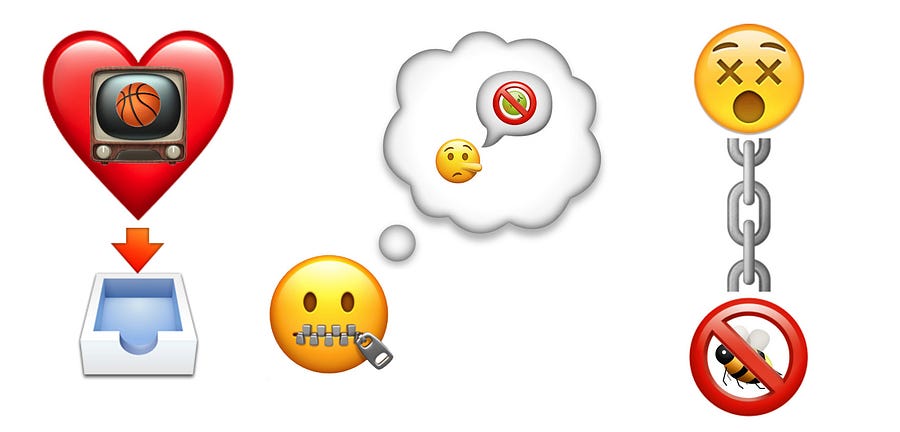
Ever since their development, emojis have held a tight grip on the attention of our pop culture.
It’s easy to see why. Unlike the letters of traditional written text, emojis have a wider variety of shapes and colors that can grab the attention. Not only that, the symbols are more directly related to their meanings, since many of them are literal (albeit stylized) representations of familiar physical objects, so recognition is faster.
And if you know what you’re doing, you can use them very effectively for various data visualizations.
"The great Tree of Life… with its ever-branching and beautiful ramifications"— Biolojical (@biolojical) May 9, 2018
-C Darwin
┌🐯🐼🐺🐷🐳🦓
┌|
┌| └🐒🦍🧒🐰🐿️🐹
| |
┌| └🐊🦖🐧🦅🐍🐢
| |
| └🕷️🦀🦗🐞🦋🐝
|
| ┌🌷🌾🌽🍍🍌🥥
| |
└| ┌🌵🥝🥕🌻🌶️🥔
| |
└| ┌🍀🥜🌹🍑🍎🍉
└|
└🍁🍊🍋🥦🍫🌺
Proportion of threatened species in each animal class— Biolojical (@biolojical) October 10, 2018
🐭:🙂🙂🙂🙂🙂🙂🙂🙂😱😱
🐦:🙂🙂🙂🙂🙂🙂🙂🙂🙂😱
🐢:🙂🙂🙂🙂🙂🙂🙂🙂😱😱
🐸:🙂🙂🙂🙂🙂🙂🙂😱😱😱
🐟:🙂🙂🙂🙂🙂🙂🙂🙂🙂😱
🐌:🙂🙂🙂🙂🙂🙂🙂😱😱😱
🐞:🙂🙂🙂🙂🙂🙂🙂🙂😱😱
🕷️:🙂🙂🙂😱😱😱😱😱😱😱
source: @IUCNRedList
#WeatherForecast - This afternoon :— Emoji Weather USA (@EmojiWeatherUSA) October 11, 2018
🌤☀☀☀🌥☀☀☀☀ 🌦
☀☀☀🌤🌦🌤☀🌤🌦🌦 🌦🌦
☀☀🌦🌦☀☁🌥🌤🌤🌥☁🌦🌦
☀☀🌦🌦🌦🌦🌦☀☀☀🌦🌦
☀🌦🌦☁🌦🌤☀☀☀🌥🌦
🌦🌥🌦☀☀☀☀☁
☀ 🌦
#WeatherForecast - This evening :— Emoji Weather USA (@EmojiWeatherUSA) October 9, 2018
☁☁☁🌧🌧🌧🌧🌧🌧 🌧
🌧🌧🌧🌧☁🌧🌧🌧🌧🌧 🌑🌑
🌑☁🌧🌧🌧🌧🌧🌧🌧☁☁🌑🌧
🌑🌑🌑🌧🌧🌧🌧🌧☁🌑☁☁
☁🌑🌑🌧🌧☁🌧☁☁🌧🌧
🌑🌑☁🌑🌧☁🌧🌧
🌧 🌧
But there are still obvious advantages to traditional text. With written words you can convey more complex ideas with more specificity.
This is because it’s easier to create a new word than it is to create a new emoji, and there is no system of grammar for emojis that helps the viewer anticipate any kind of structure of groups of emojis in the same way that there is with groups of words.
Even despite the fact that common people have already demonstrated their ability to learn a vast variety of formats of graphs and charts, there are still no methods of arrangement for emojis that can be used to communicate more complicated messages.
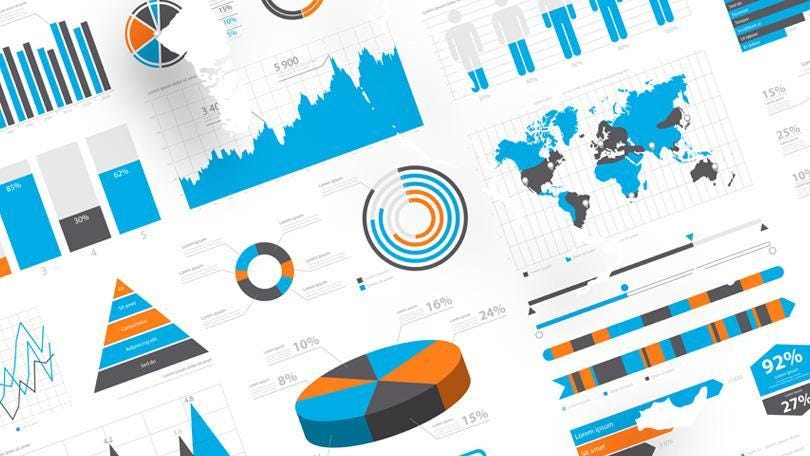
Or is there?
What if there was a way to use all the strengths of both emojis and traditional text, and maybe even exceed them both?
What if there were already ways to frame emojis/images/whatever and connect them together to make them more than just a series of nouns?
There are, thanks to comic books and other platforms. In fact, there are at least 23…
1. The Zoom (to use instead of the word “in”)
To demonstrate this, we’ll first need some symbols, like this one on the left for an alien and this one on the right for an alien craft:

By themselves they’re saying nothing. But imagine if we used one of these zooming effects that most people are already familiar with in order to link the the two symbols together:
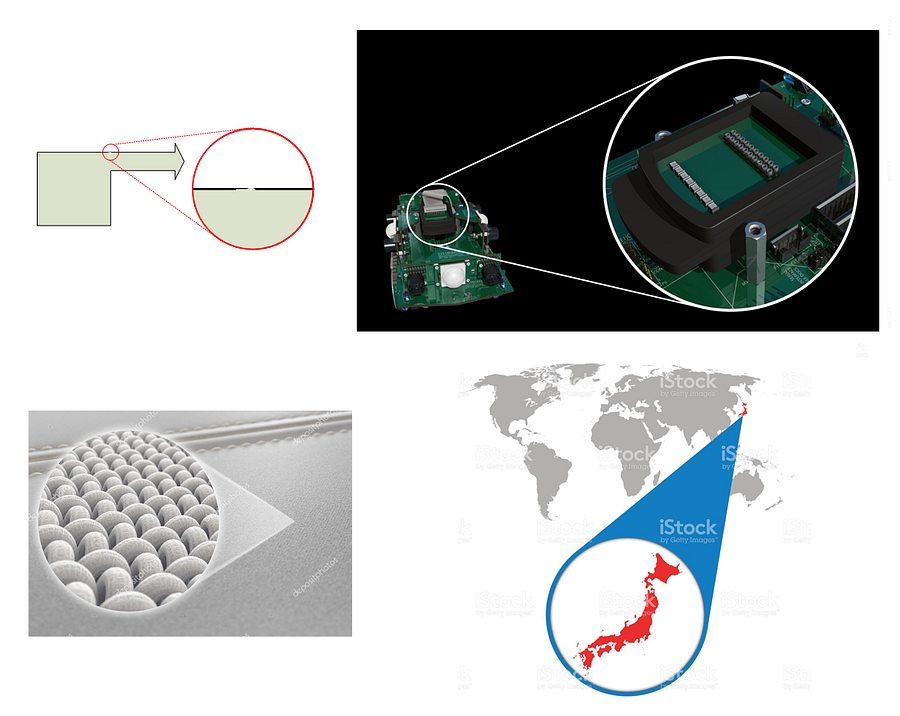
We would then be able to indicate that the alien is inside of the craft.
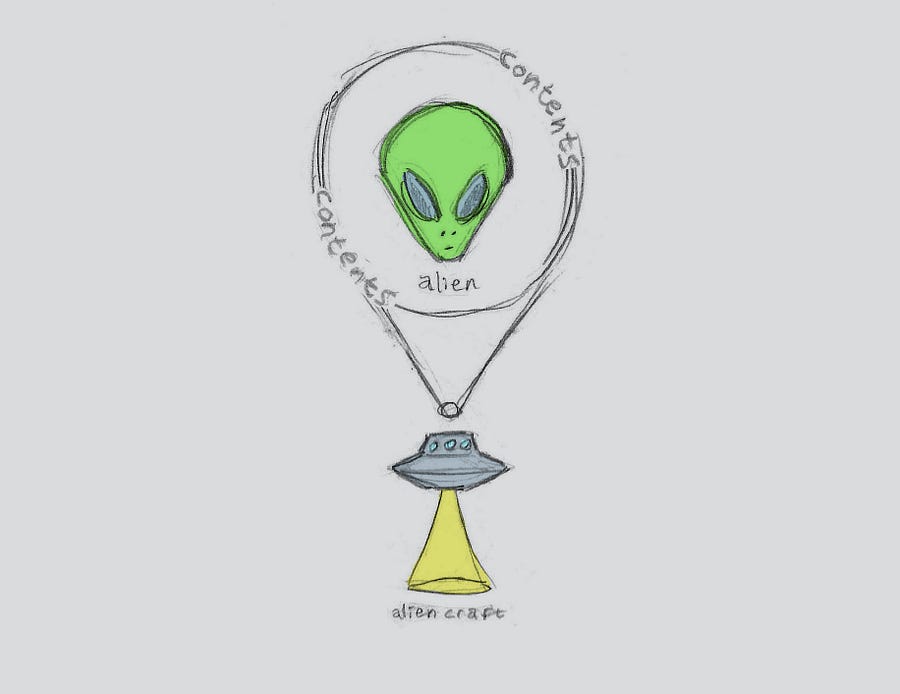
Pretty simple, but this isn’t the only connective symbol that is already well established.
2. The Line-of-Sight (to use instead of the words “seeing”)
Anyone who has been an avid comic reader has come across the technique of using dotted lines for the artist to indicate the direction in which a character is looking.

If we continue this tradition outside of comics then we’ll have yet another way of indicating relationships between objects.
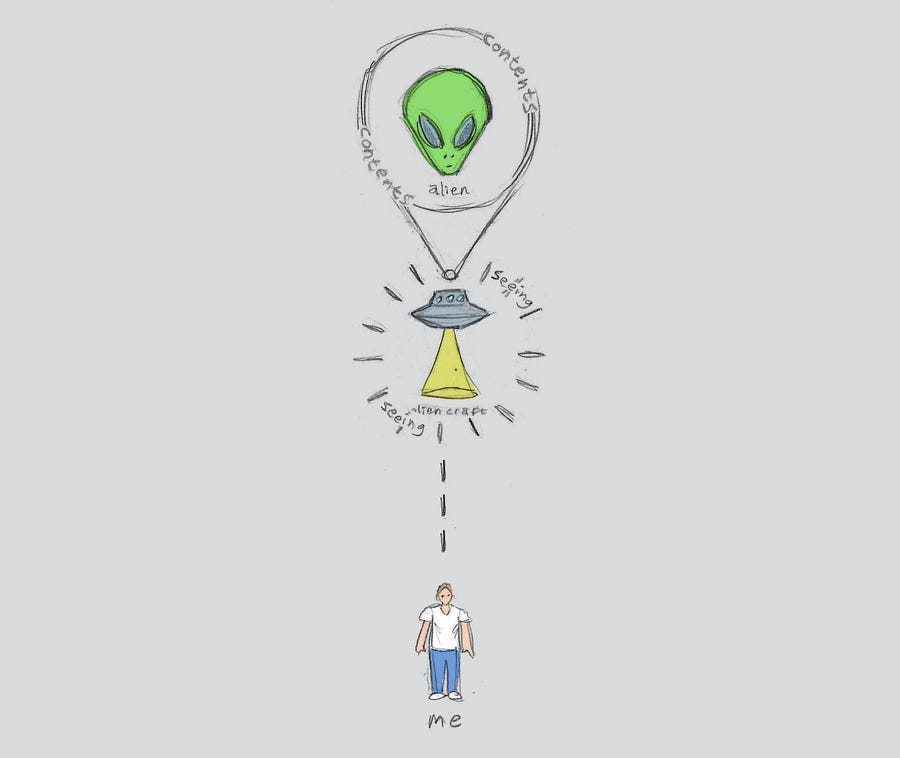
Now we can add a symbol for a person such as myself and show that I’m looking at something (that contains something else).
But there’s an even more familiar connective symbol than both of those.
3. The Word Balloon (to indicate a statement)

If we place any emojis inside of a word balloon, most readers will immediately understand it as an indication that those emojis are what someone is speaking about or claiming. So we don’t need to use the words “he said”, “she said”, or “they said”.
In this case, we now have my claim about an “alien space ship” that we can compare to what I’m actually seeing, “a disc shaped object”.
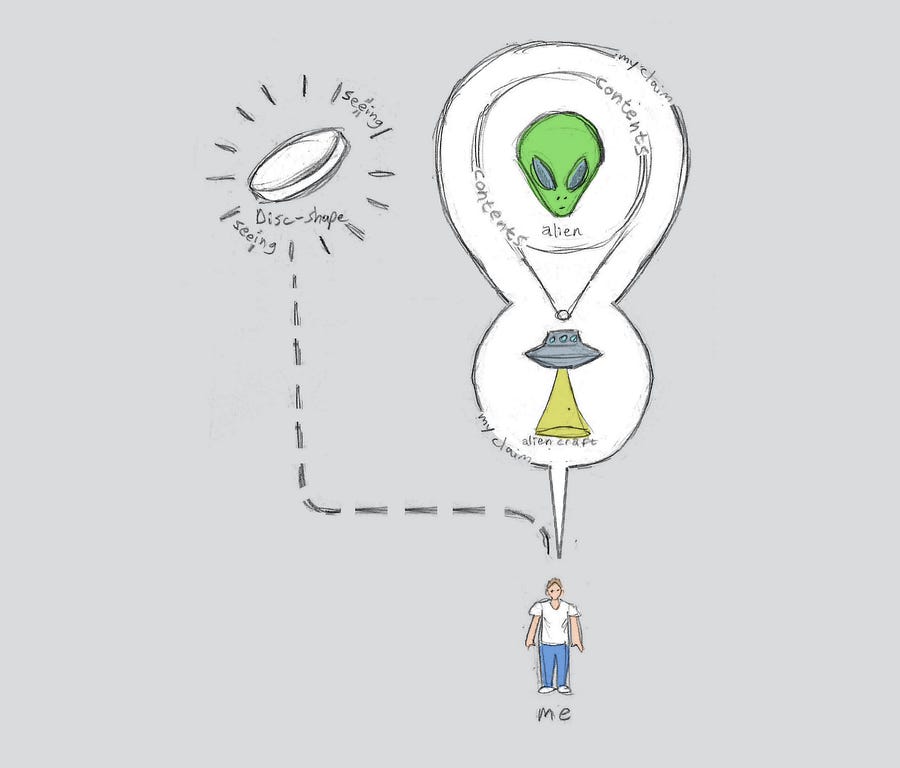
Alternatively, if we aren’t in the mood for that, we could just add more speculation, like so:
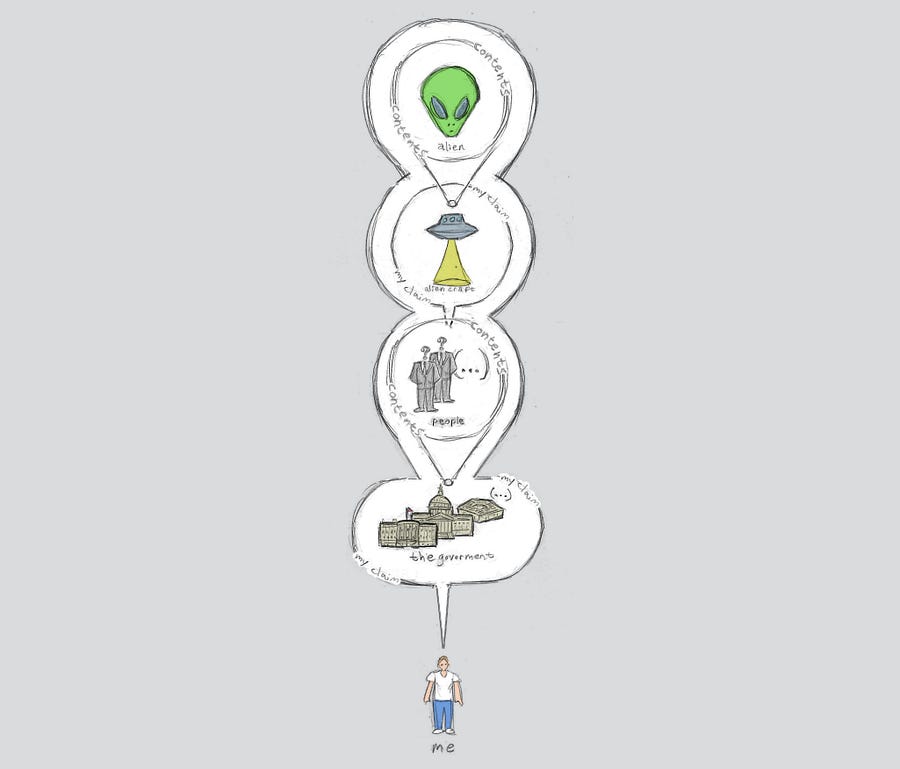
Now I am pictured here saying that people in the government (or at least in the buildings) are talking about alien space ships.
4. The Whisper Balloon (to use for something said in “secret”)

But another trick of the comic book trade is to use dotted word balloons to indicate whispering. We can use them to indicate that someone is SECRETLY saying something.
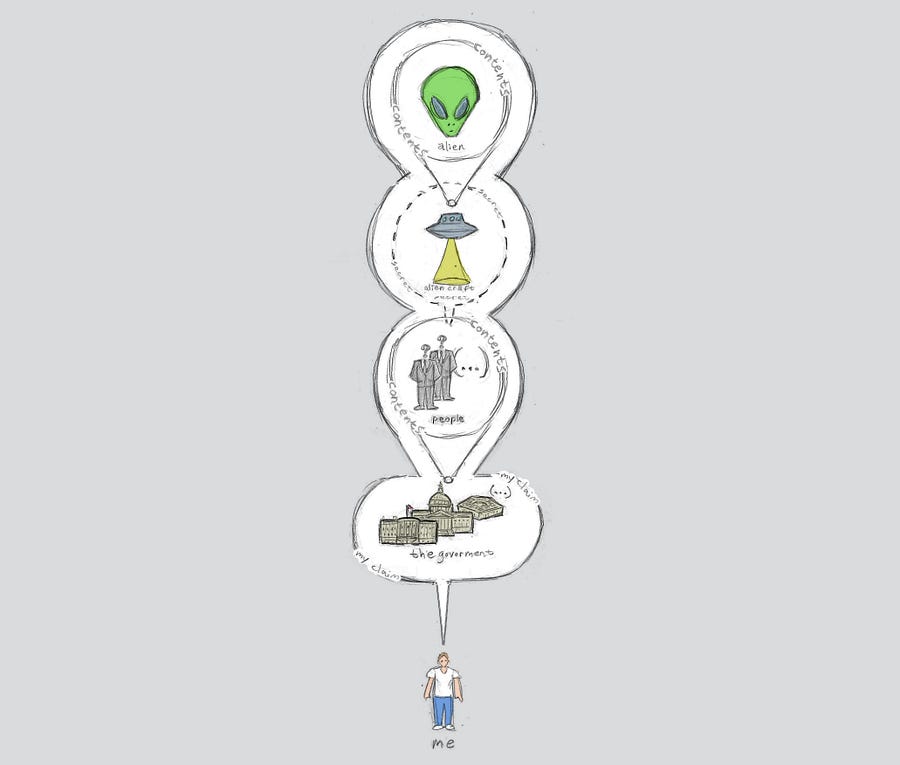
So now we have a conspiracy theory; a claim that the people in the government aren’t sharing this alien info with the public.
5. The Line (to use instead of the word “aspect”)
But what happens when we’re not talking about physical objects? What happens when we want to discuss the abstract attributes of an object?

Perhaps a simple line could do the trick.
6. The Thought Bubble (to use instead of the word “think”)
What about someone’s inner life?
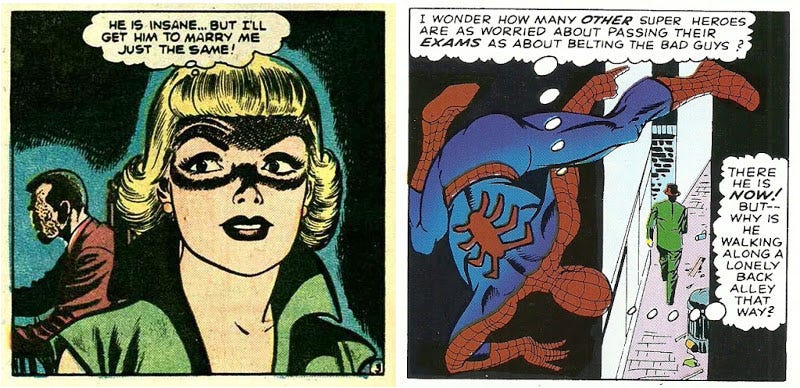
Again, there’s already a commonly used symbol for it.
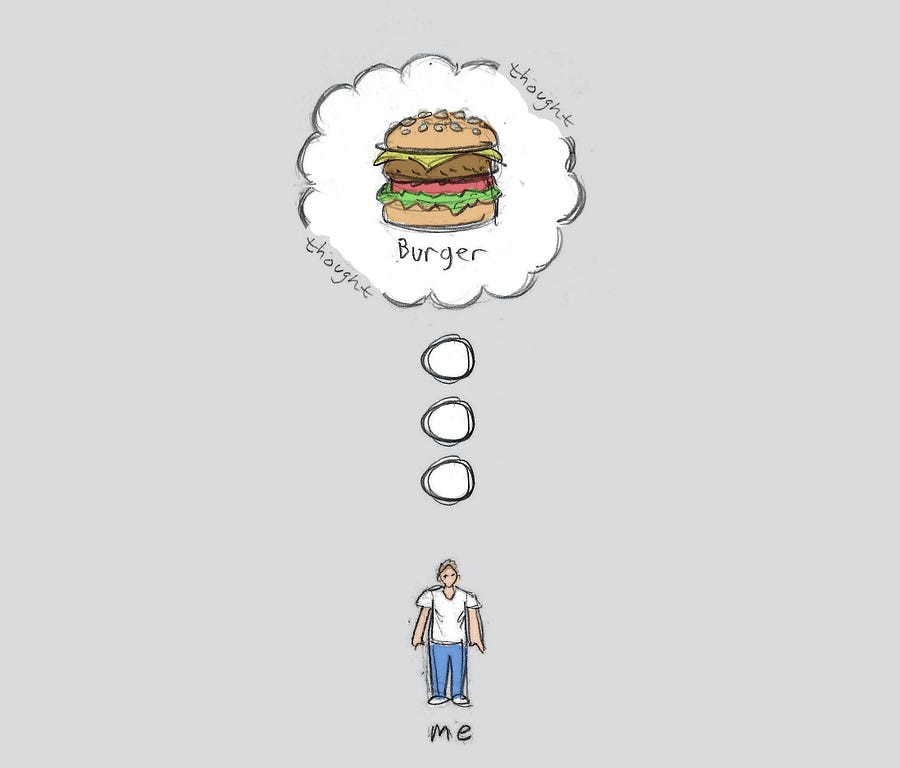
Now you can read my mind, so to speak.
7. The Heart (to use instead of the word “love”)
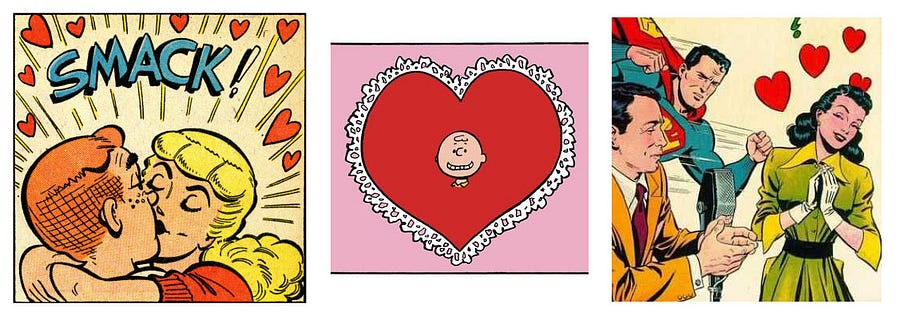
And if we want to be specific, we can use a heart to indicate strong positive feelings toward something rather than just indicating the current focus of someone’s thoughts.
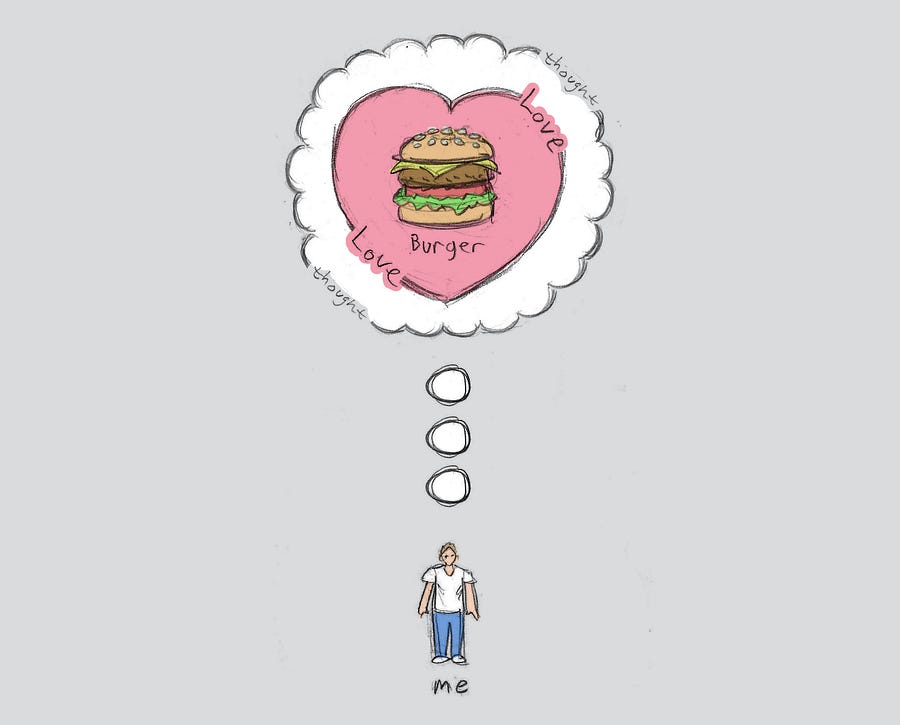
8. The Condition, Cause, and Effect (to replace the words “condition”, “cause”, and “effect”)

But there are some important concepts that don’t already have any particular symbol or set of symbols. For instance, let’s say you want to indicate certain conditions that combine with certain causes to make certain effects. There is no established way of showing this visually to the average viewer. But it wouldn’t be difficult to create one, for example:
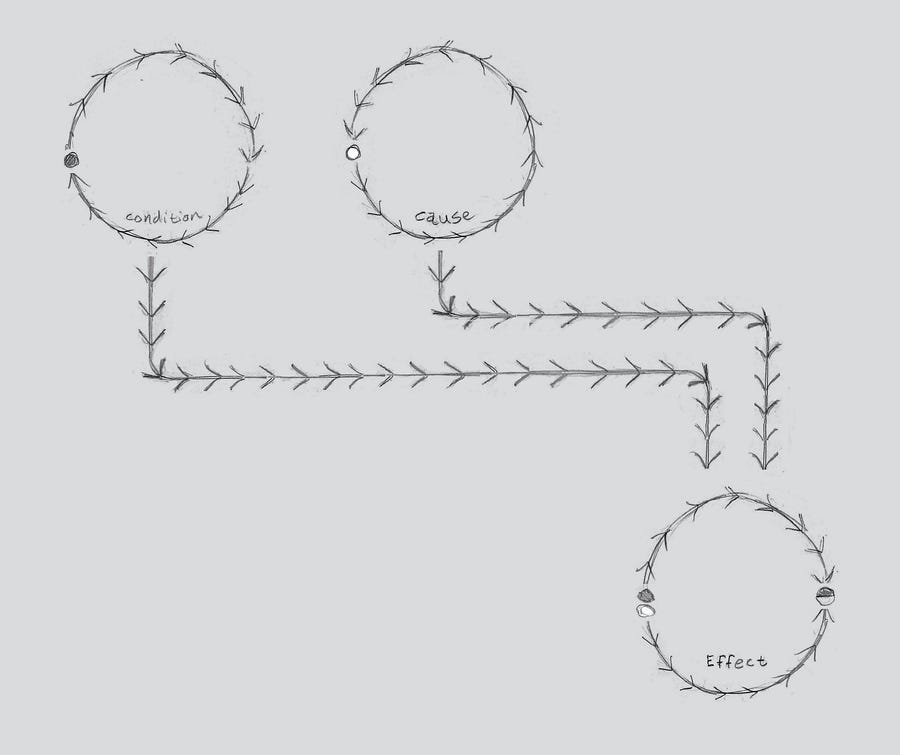
Simple enough. Now let’s see how it looks incorporated into the others.
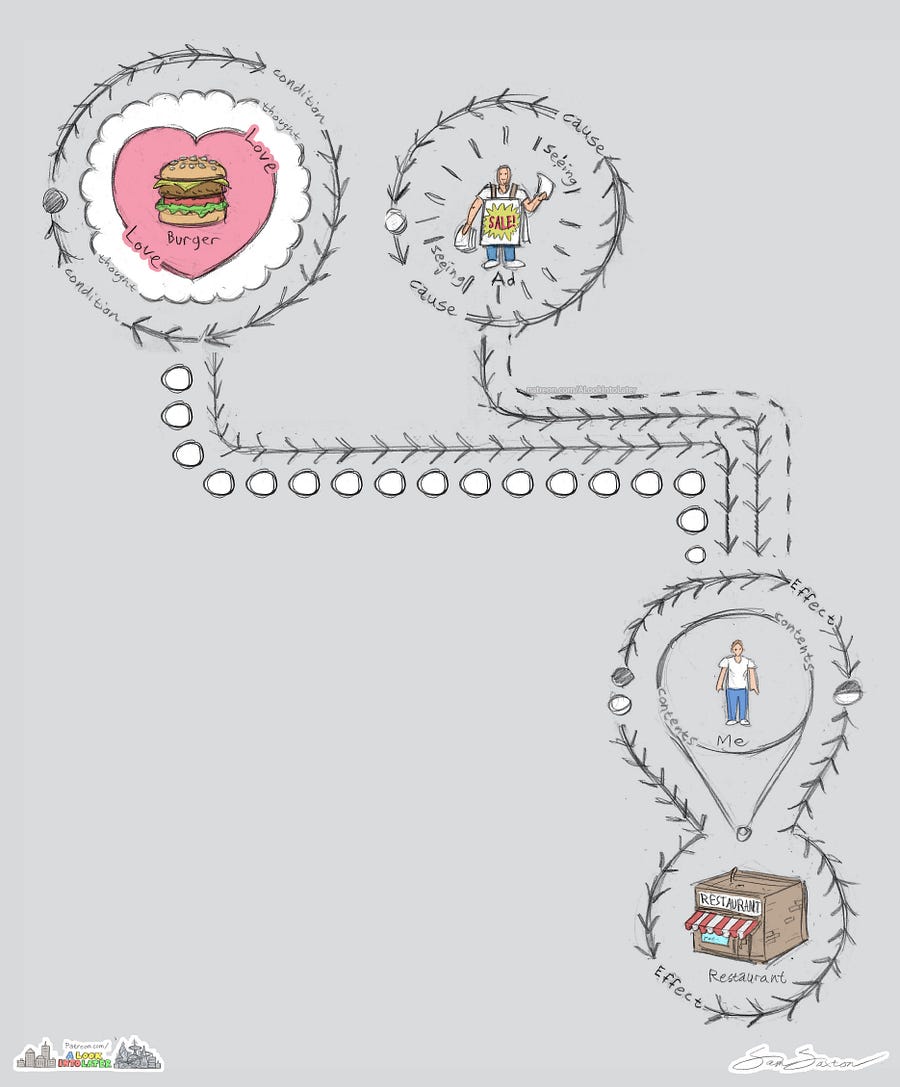
So now I have a purely visual way of telling you that I’m inside of a restaurant because I love burgers and saw an advertisement for them.
9. The Dotted Thought Bubble (to replace the words “subconscious thought”)
But what if we make the outline of a thought balloon dotted, just like we did with the whispering word balloon.
It should be easy for most people to see this as a less evident bubble and interpret it as a “sub-conscious thought”.

Now we can show what someone is thinking subconsciously.
10. The Glowing Cloud (to replace the word “ideal”)
Here’s another idea we can take from comic artists. How do we depict a given scenario as being ideal? Simple. Put it on a glowing cloud and it should be universally understood as someone’s personal heaven.
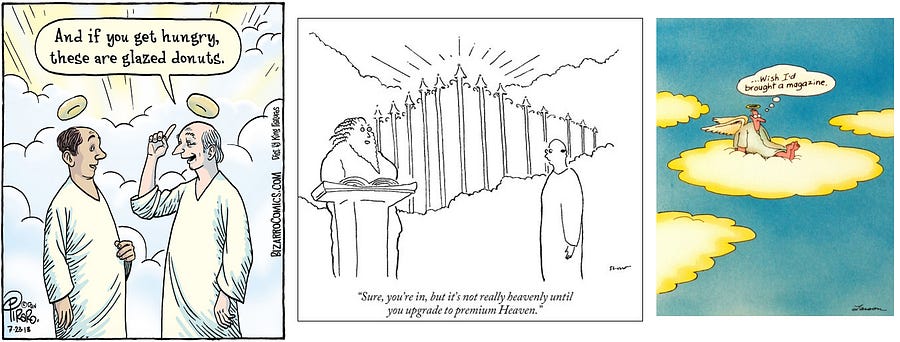
And we can get pretty abstract in our depiction of it…
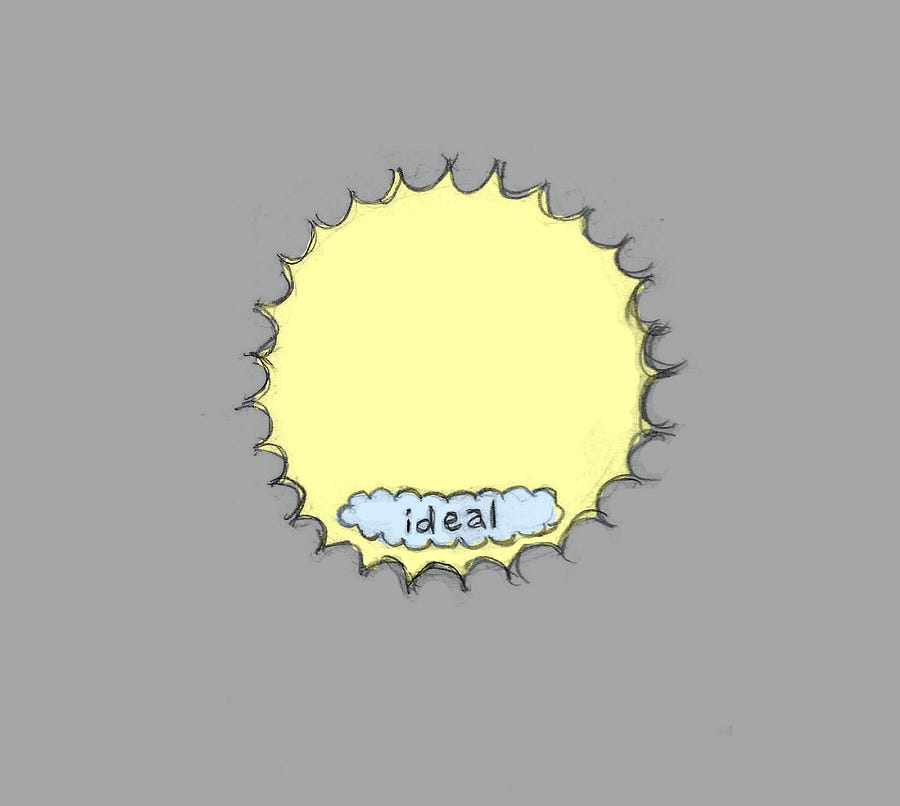
So a subconscious ideal would look something like this:
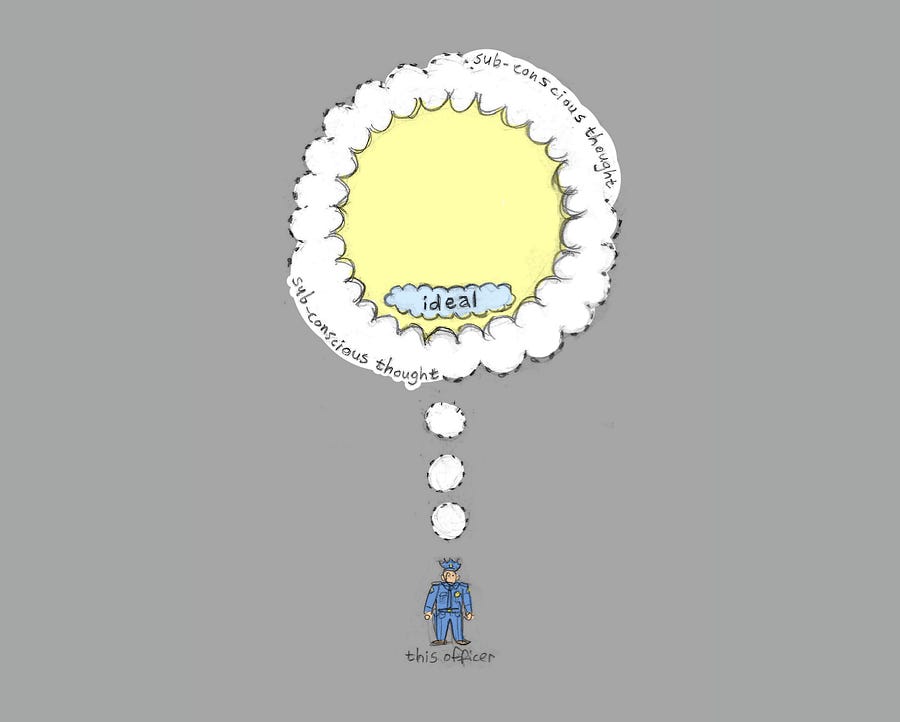
11. The Naught (to replace the word “no”)
Some symbols are so universal that everyone has been exposed to them. For example, this not/naught/zero symbol could be used as a frame to undoubtedly unambiguously indicate something as ‘not existing’.

So we can place it inside the “ideal” frame to indicate someone’s extreme desire to be rid of something.

So now this cop is depicted as having an unconscious bias; he doesn’t want black people to exist.
12. The Cross-hairs (to replace the word “focus”)
Another common symbol with a consistent meaning, the cross-hairs, is used to indicate where one’s focus is aimed at.


So if we combine this with the subconscious thought bubble, we can now visually say that this cop is focusing on something (subconsciously).
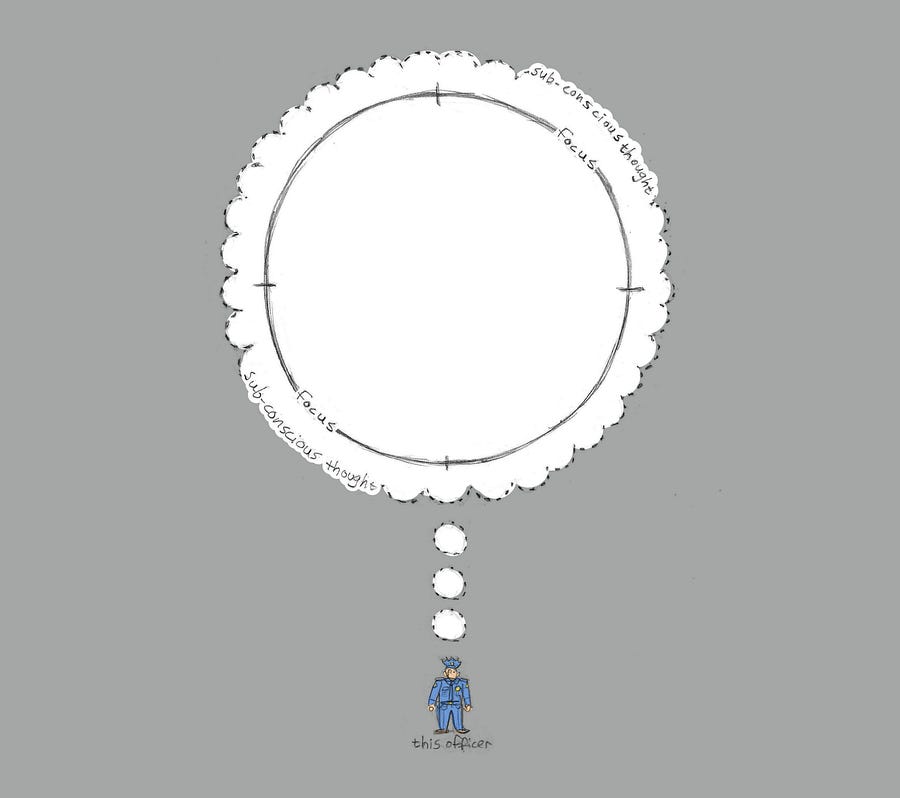
13. The Target (to replace the word “goal”)
But what good is a focus without a goal? We can use the center of a shooting target, the bulls-eye if you will, to indicate any goal.

Like so:
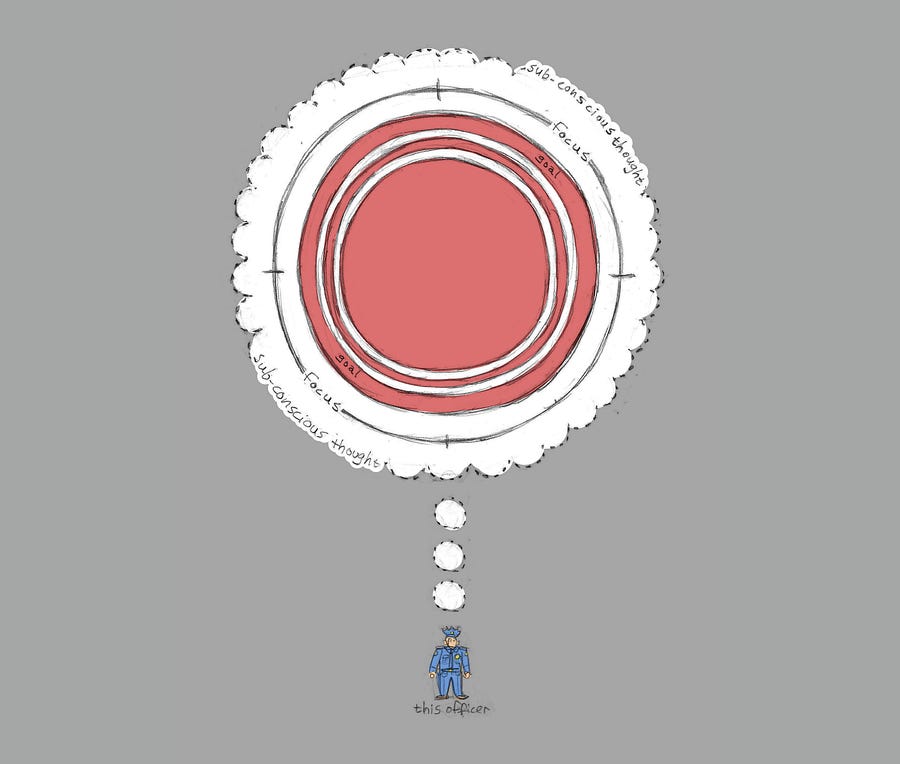
Now he’s not just focused on a subject, he’s focused on something he wishes to achieve.
14. The Blood Splatter (to replace the word “kill”)
What if the goal is to literally hit a target? And kill it? We can easily signify that with a splatter of blood.

Like so:
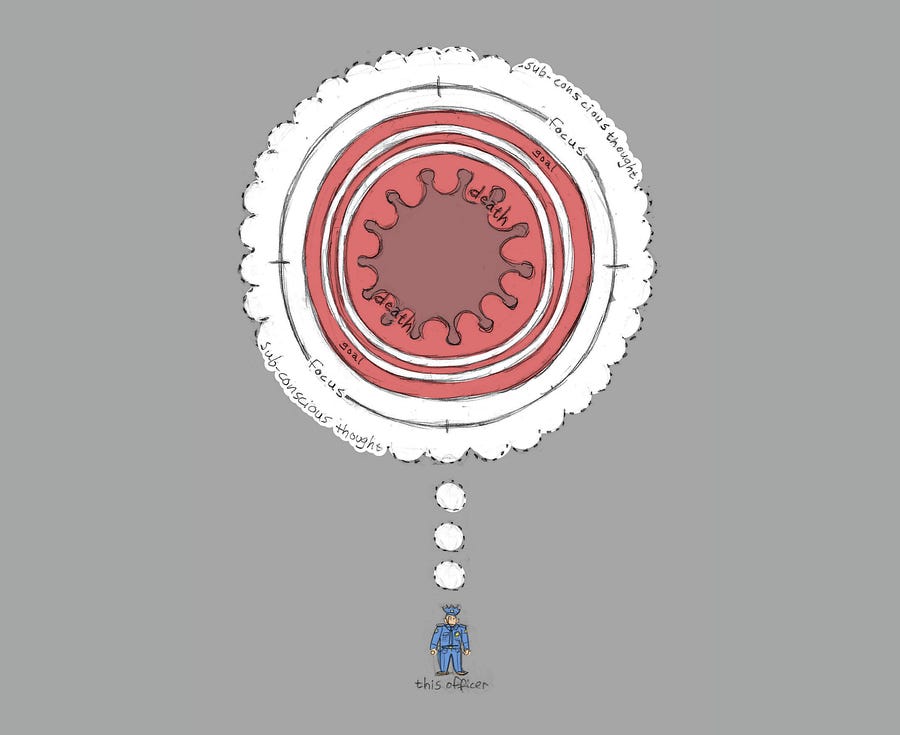
So now he’s focused on killing someone. This guy:
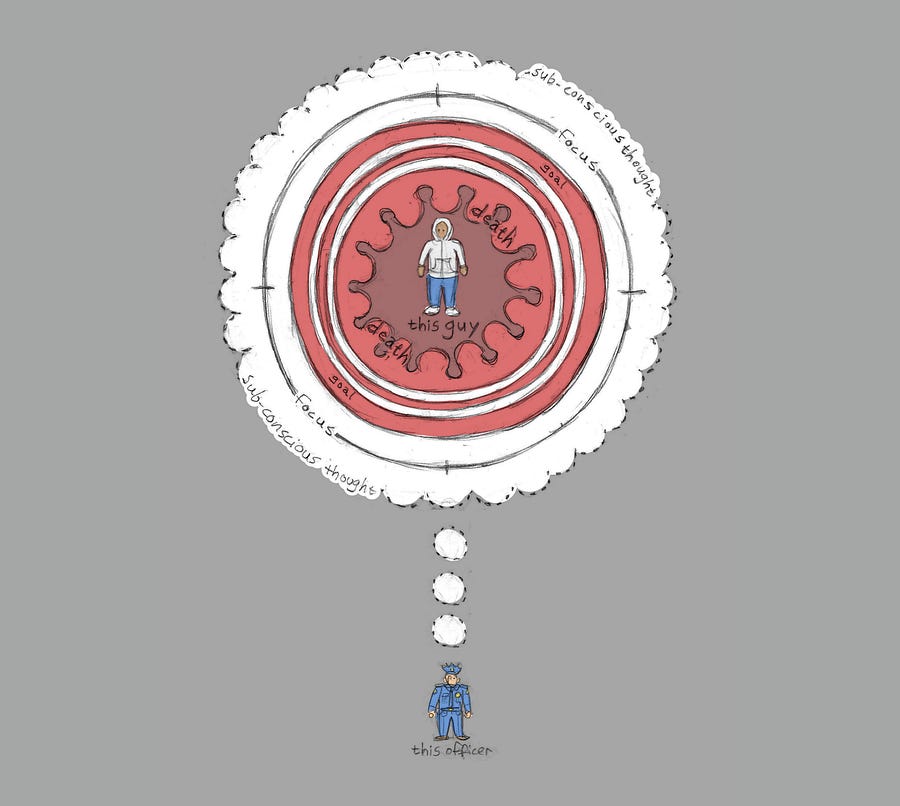
Thus, now we have yet another full ‘sentence’ where I am accusing a cop of using lethal force against a guy as a result of the cop having a racial bias.
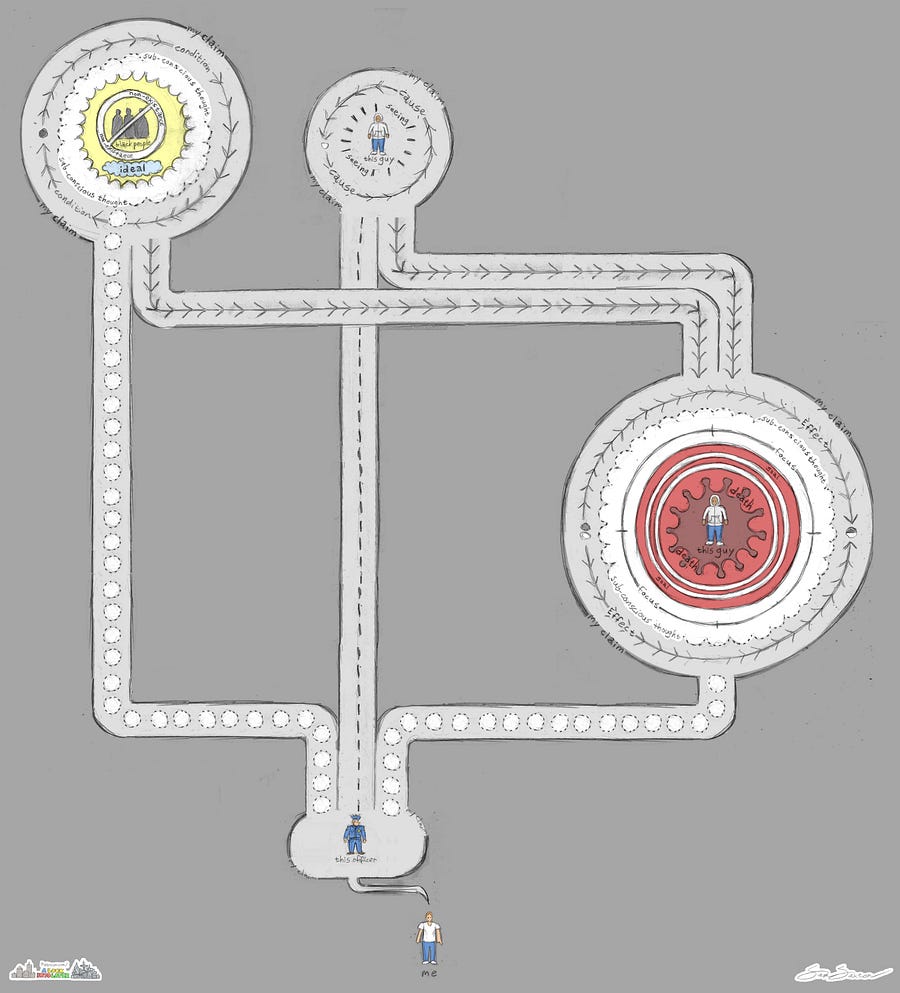
15. The Electric Word Balloon (to replace the words “on tv”)
If you’ve read enough comics, you’ll know that there isn’t just one type of word balloon; there are many. One is the electric word balloon; a word balloon with lightning bolt-like lines to indicate that the voice is coming from some kind of electronic device like a tv, phone, or robot.

So if we take advantage of this symbol, we can discriminate between real objects and imaginary objects depicted on a TV screen.
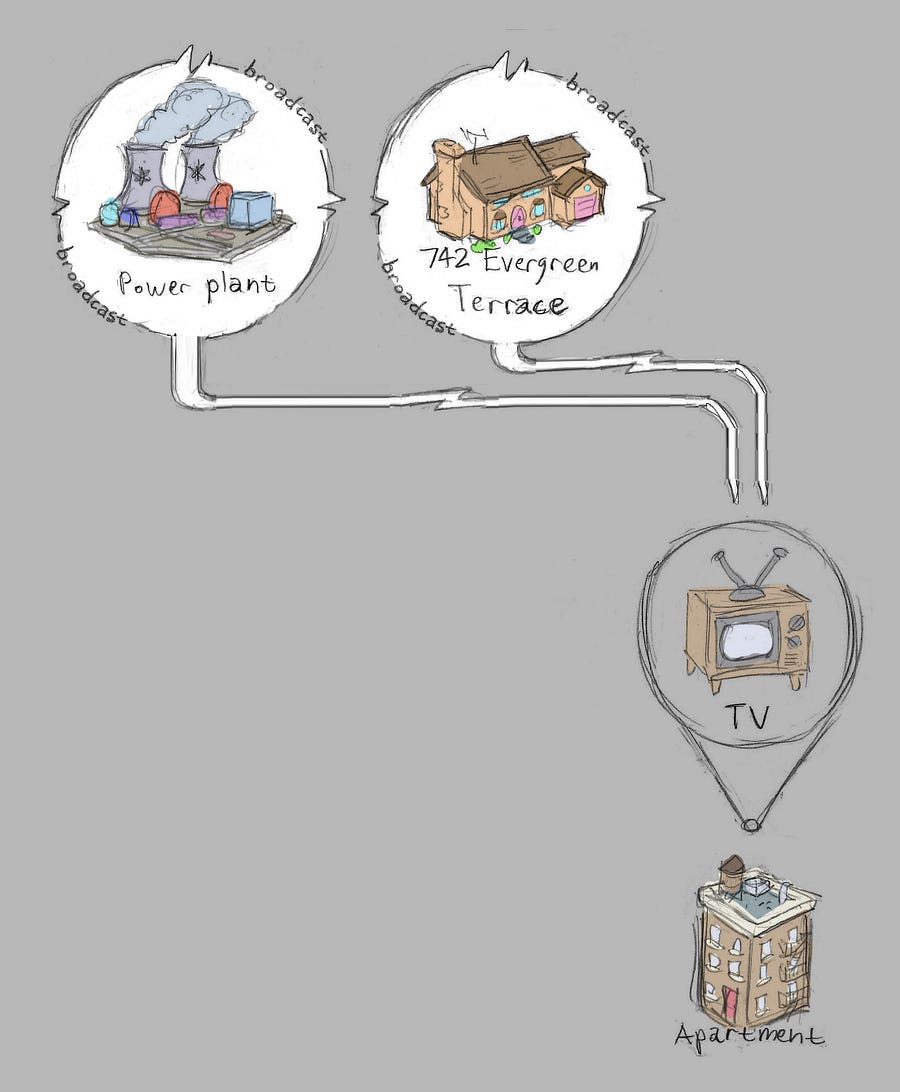
16. The Theater Mask (to replace the word “role”)
But in doing so, we’ll end up having imaginary people as well, so we’ll need to be able to distinguish between actors and the roles they play in a work of fiction.

So now we can show that this man, Harry Shearer, is playing another man, named McBain.
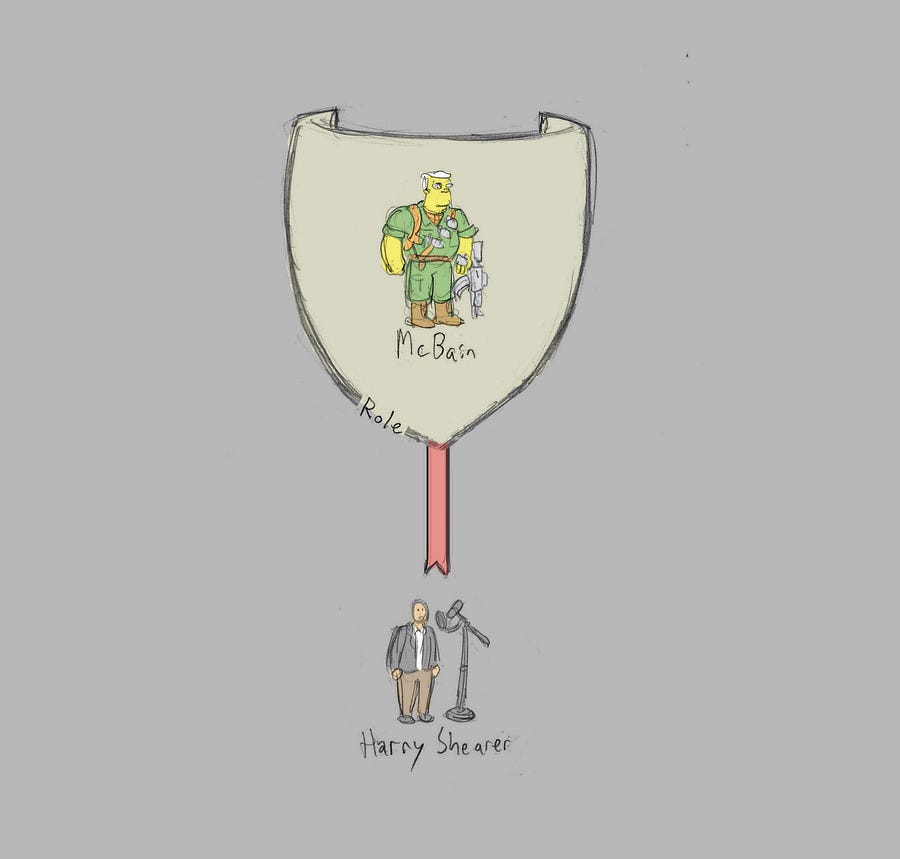
But if you watch this show, you’ll know that McBain is a fictional person not just to us, but to the Simpson family.
So if we make a chain of them, we can show that Mr. Shearer is actually playing a character named Rainier Wolfcastle who is playing OTHER characters: Radioactive Man and McBain.
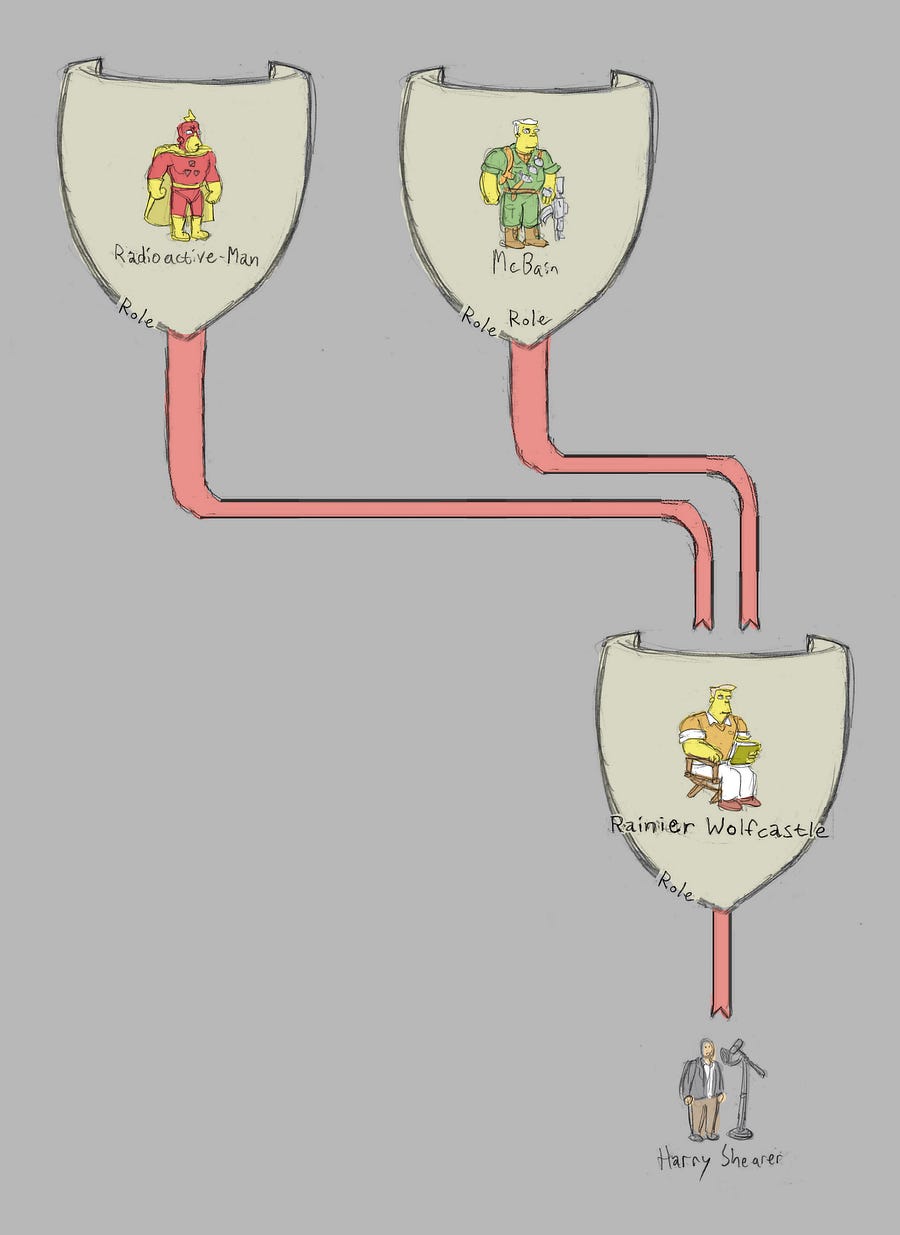
So now we have a full ‘sentence’ about the fictional worlds contained within the fictional world of The Simpsons, which is a TV show in our world.

17. The Excerpt (to replace the word “depicted”)
Now that we know how to depict the contents of a TV, we should also look at how to depict the contents of a page of a book or the canvas of a painting.
This is typically done with a simple box.
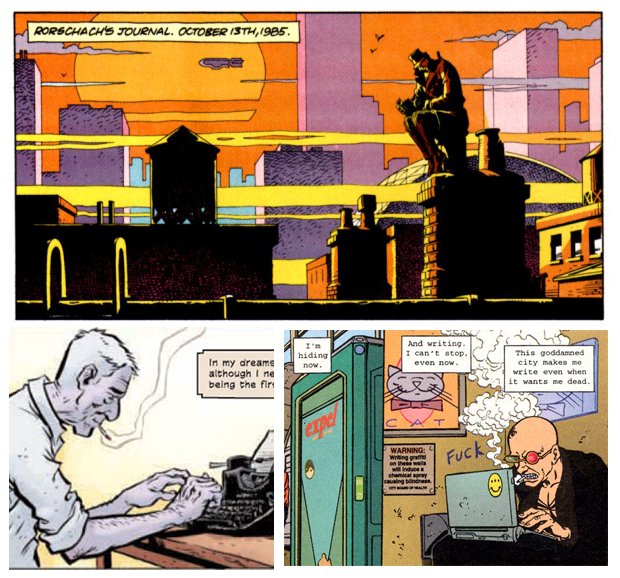
So if we want to discuss some of the contents of Van Gogh’s Starry night, we might do so like this:

But of course, the artist may never have explicitly confirmed that his brushstrokes were indeed meant to depict those objects.
So perhaps we should instead identify only the shapes themselves as being the contents of the painting. The “tree” and “star” are only objects which share a similar appearance, until confirmed otherwise.
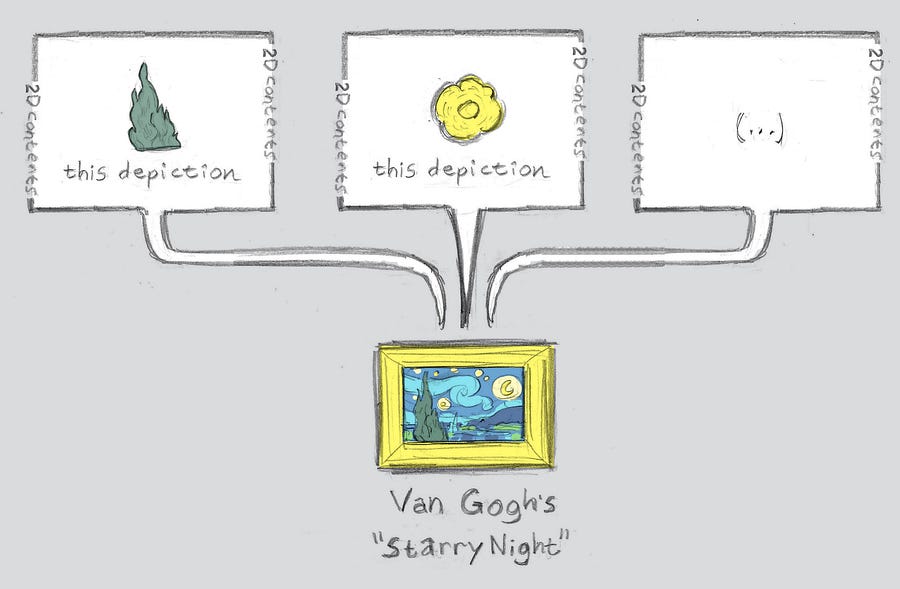
But now that we’ve done so, we can also identify other objects that the brushstrokes are reminiscent of. Objects that share the same shape or color.
So now we can see the painting as doing something more than just capturing a scene; it’s evoking the impressions of other physical things in other places/times. In doing so, it creates a world that doesn’t exist, and perhaps couldn’t exist, but none-the-less can be seen.
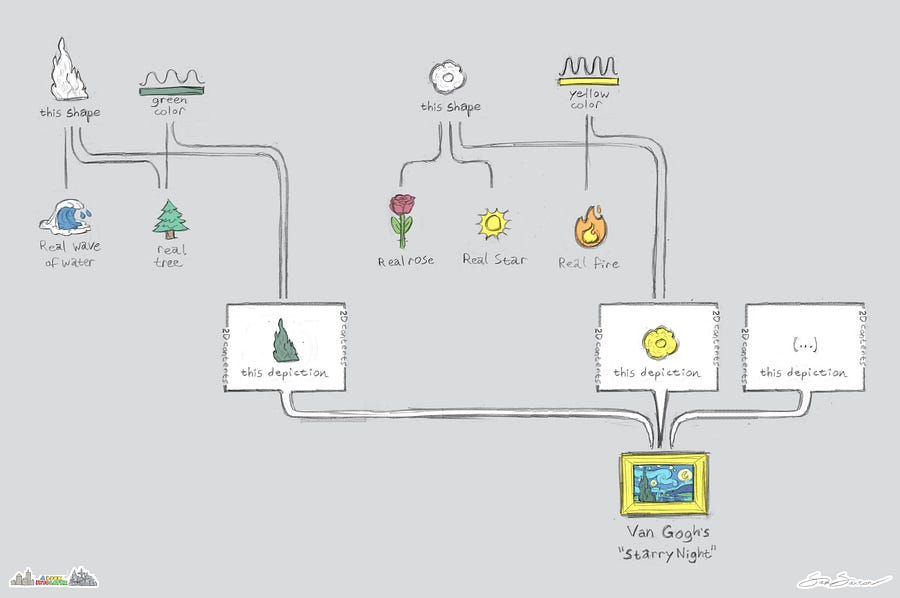
18. The Polaroid frame (to replace the word “moment”)
But what if you’d like to capture a series of events in time?

The simplest way to do that would seem to be a Polaroid-style photo as a frame.

But if you want to use this frame, you’ll need some way of linking them together…
19. The Race Flag (to replace the words “start” and “end”)
The simplest way to show the start and end of a given subject would probably be to use a green and a checkered racing flag.

And to tie them together, what better way than tire tracks?
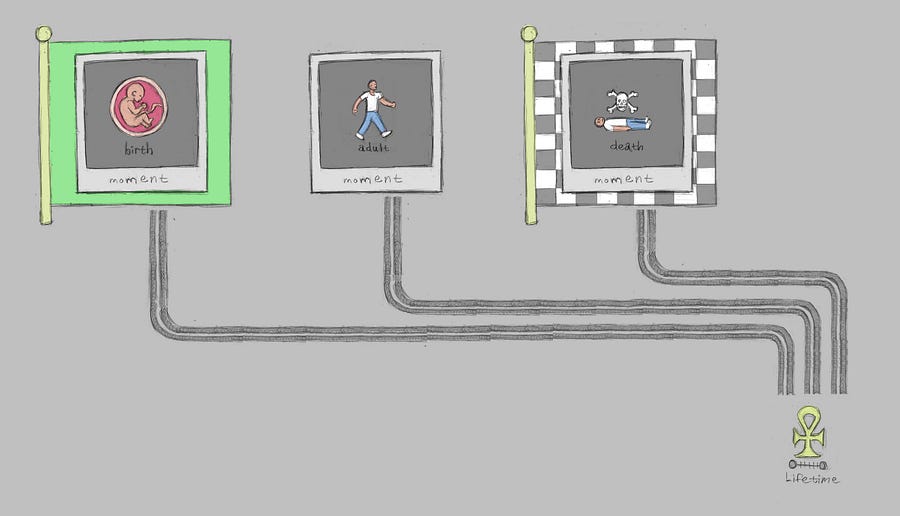
Now we have someone’s lifetime.
So if we want to indicate that this person was born and died one place but visited another, we can just put the ‘zoom frame’ in there from earlier.
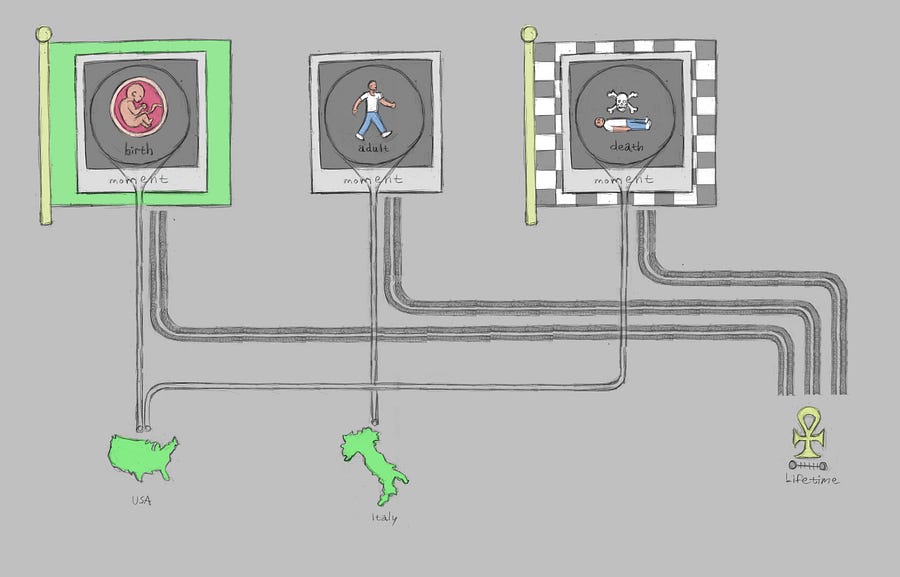
Pretty simple. But what else can we do?
20. The Open and Closed Shutters (to replace the words “public” and “private”)
How about frames to show what content is public and what content is private?

Venetian blinds ought to do the trick.
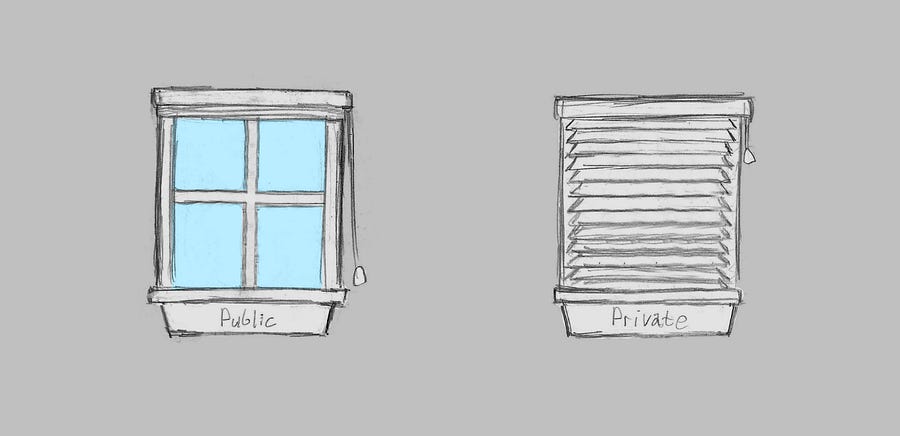
21. The Spikey Word Balloon (to replace the words “certain claim”)
Or how about when you want to make a claim that you’re certain about?

Perhaps the spiked word balloon from comic books, typically used for when a character is yelling, would be best for showing that.
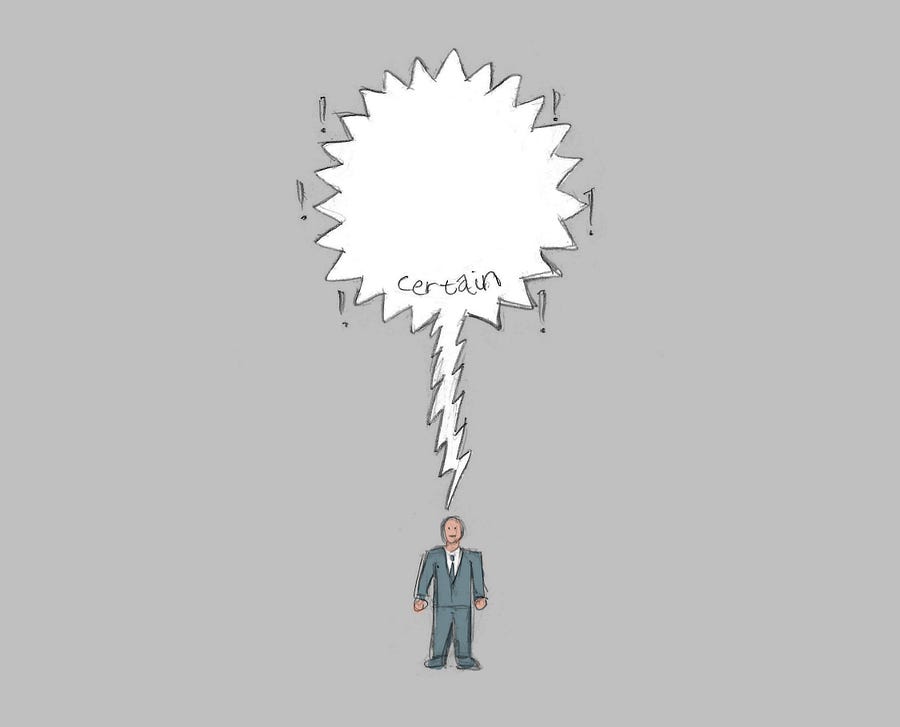
But now you’ll probably want a frame for the opposite effect too…
22. The Wobbly Word Balloon (to replace the words “uncertain claim”)
A wobbly word balloon is often used for a character who is groggy or confused.
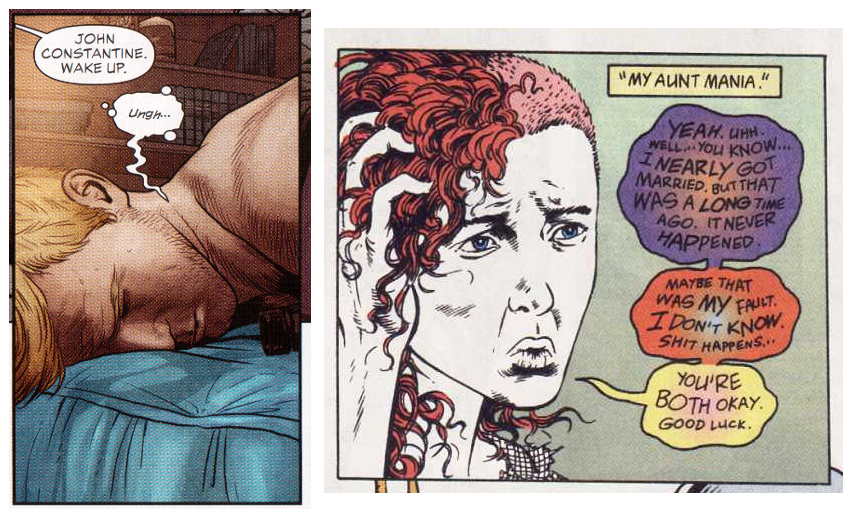
So why not use it for someone making a claim that they’re not quite sure about?

But on the other hand, what if they are sure about the inaccuracy?…
23. The Flaming Pants (to replace the word “lie”)
It’s far from uncommon to depict a liar as having pants that are on fire, as a reference to the playground song.
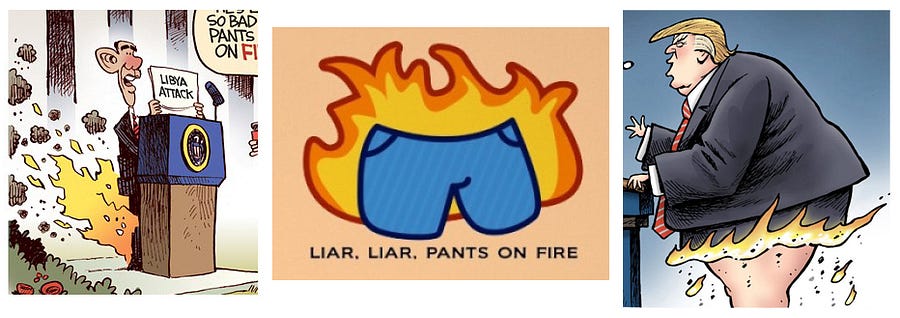
So this may be the perfect way to quickly signal that a statement is intentionally false.

So using these new frames, we can show how a politician who lacks transparency can take advantage of the transparency of his constituents to confidently get away with clandestine behavior.

Conclusion
It’s possible that some day a symbol system much like this will actually replace words as the dominant visual language in society.
Why?
Mainly because of the difference in the speed of reading.
Not only are icons more visually distinct than words, but their arrangement is now more distinct as well.
The colors and shape of a given overall web of pictographs would naturally indicate aspects about the nature of the content in a way that could then be easily and quickly inferred as soon as you’re even somewhat familiar with the language.
For example, with this system you can tell in an instant from a distance how speculative (and thus, less reliable) the content is, based on how much of it is inside word balloons (and even less reliable when the content is within thought bubbles within those word balloons):
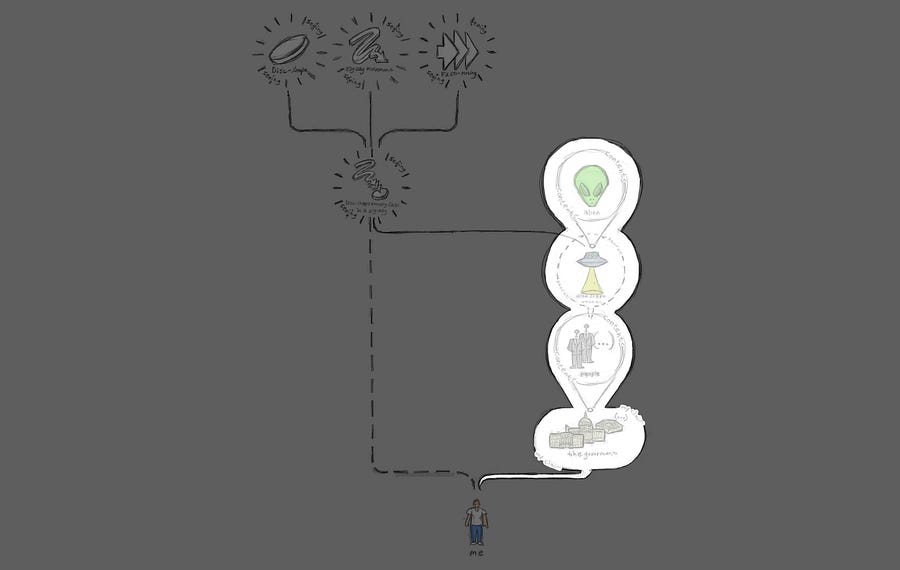
Or you would be able to tell in an instant from a distance how much of the content is about fictional worlds (and thus more trivial) versus content that is not:

These types of distinctions, if learned, would often serve as a massive time-saver.
Compare this to how we use words today.
Sure, we read the entire shape of a word instead of each letter, but we can’t read an entire sentence at once because they’re always the same shape: a straight line. And we certainly can’t read an entire article or email at once since they’re always just in the shape of a series of lines, it says nothing about the content.
So it’s essentially the difference between a 1 dimensional language and a 2 dimensional language.
We can now imagine having a huge screen filled with a vast interconnected web of concentrically-layered groups of frames around a wildly wide variety of symbols; complex (the equivalent of as much as an entire book in fact), but almost instantly understood in full.

Now you may be wondering: How much of this screen could you even process at one time? Wouldn’t this be overwhelming?
No.
The amount of information that you can process visually is mostly dependent on the amount of familiarity you have with the content.
For example, compare how different your experience is when reading these two different words:
• Supercalifragilisticexpialidocious
• Pseudopseudohypoparathyroidism
Assuming that you’re familiar with the song from the movie “Mary Poppins”, you probably didn’t have to read that first word in it’s entirety (and it’s even easier if you try again now).
And assuming you’re not a doctor, you did have to read the second word the whole way through; perhaps you even had trouble doing so (I know I did), even though it’s more repetitive and has less letters than the first.
So hopefully this gives you an idea of the dramatic difference that familiarity makes on speed and cognitive load.
But you won’t know the true potential of your mind until you’re using a new language like the one that I’ve described in this article on a regular basis.
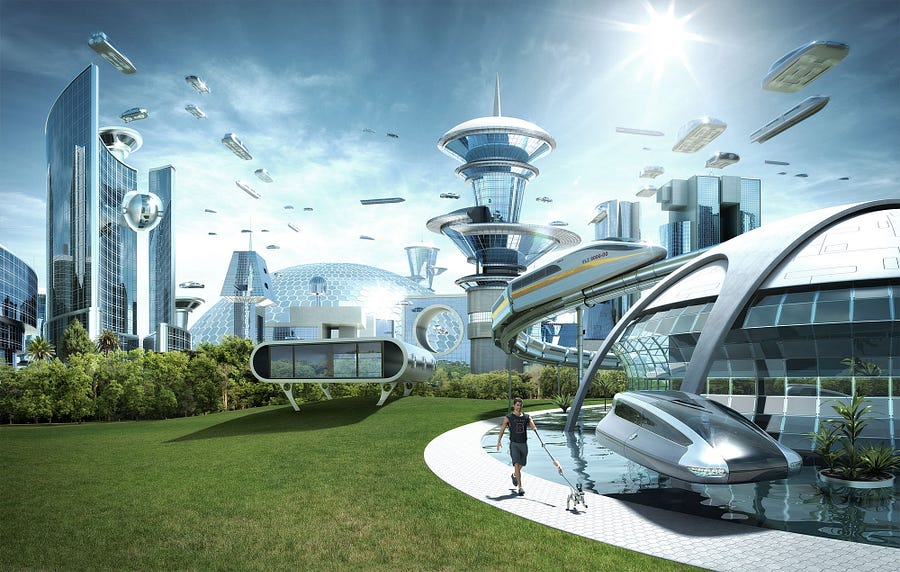
People love to watch sci-fi movies depict the future with flying cars, space battles, and robot butlers, but it seems as if the biggest innovations were always the more abstract advances, such as the innovations in communications. Thus, the average person at all times has always had little conception of their true future. They didn’t see the PC until it was everywhere. They didn’t see the internet. They didn’t see smartphones. Or Bitcoin. Or meme culture.
Consider yourself lucky, because this is the most dramatic development our culture will see in the next few years and most of your peers know nothing about it!
------------------------------------------------------------------------------------------------------------------------
Enjoyed this article? Please check out more at patreon.com/alookintolater and consider donating to encourage the creation of more!

No comments:
Post a Comment